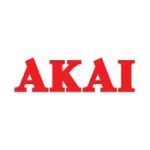A picture tells more than…
Technical writing is not anybody’s business. Our technical writers know very well that their choices can make or break your manual. Odd as it may seem, technical writing is first and foremost a choice between text and illustrations. If a picture can tell more than a 1,000 words, please opt for the picture(s)! That’s why our technical writers always (!) are in very close contact with our technical illustrators.

But the choice between texts and pictures is only the first consideration. Technical writing consists of so much more.
Which choices to make when writing a manual?
Let’s go through some of the choices any technical writer faces:
- What should be the tone of voice in a manual? Addressing a senior citizen using an alarm system is quite different from a mechanic whose primary job is to put together bridges.
- Is all information available? If a technical writer doesn’t know enough about your product, he might write that your product “needs regular cleaning”. But phrasing it this way is way too vague to guarantee an outstanding durability of your product…
- How fine-grained should one be? This is one of the most important questions in technical writing. Do you presuppose some relevant knowledge, leading to an in-depth section like “Redistributing fuel into the active tanks”? Or would your target group not have any clue, and would more general sections like “Filling the tanks” be appropriate?
- In technical writing, there are not only internal guidelines. There are also external regulations. Technical writers have to know them all, whether they originate from your own country, the European Union, or any other market.
- In this respect: not only your product can be faulty, your manual can have shortcomings. User manual writing is an integral part of your product! A faulty manual could lead to legal liability…
Three things to remember when writing a manual
If a picture tells more than a 1,000 words, then one should not hesitate to do away with the words. But there are three more things that Manualise considers to be its core principles. They are: minimalism, Simplified Technical English and topic based authoring.
Minimalism
Minimalism, in short, promotes the use of as little text as is possible. To give you an example: if you want to fill up an engine with oil, it is not necessary to tell why this filling up is so important. However, it is important to tell with which intervals you have to fill up.
Simplified Technical English
Simplified Technical English (STE) is a subset of English, aiming at making English more understandable in technical documents. Sentences are limited to a certain number of words. Simple words should be used so that their meaning is not up for discussion (for example, ‘to do’ instead of ‘to carry out’).
Topic based authoring
Technical writing is also: topic based authoring. Writing a document in a topic based fashion, gives you the best guarantee that your content is organized systematically. You can think of separate topics like installing and cleaning. By using these clear-cut information blocks, content becomes reusable. This is very cost effective. But not only that: the consistency in your documents will improve drastically. This will give your customers a lot of confidence in the systematic way you approach things.
Let Manualise do the writing
Manualise is an allround specialist in technical writing and user manual writing. We know how to use pictures (!) and we know all the regulations that you should be aware of. We also know a thing or two about corporate identity. The result? A manual that is in line with the expectations of your customer. In other words: a manual that you can be proud of.





